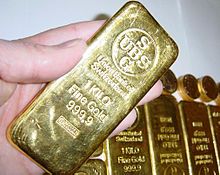June 2014 archive
Jun 06 2014
Cartnoon
Jun 06 2014
On This Day In History June 6
Cross posted from The Stars Hollow Gazette
This is your morning Open Thread. Pour your favorite beverage and review the past and comment on the future.
Find the past “On This Day in History” here.
Click on image to enlarge
June 6 is the 157th day of the year (158th in leap years) in the Gregorian calendar. There are 208 days remaining until the end of the year.

On this day in 1933, eager motorists park their automobiles on the grounds of Park-In Theaters, the first-ever drive-in movie theater, located on Crescent Boulevard in Camden, New Jersey.
The drive-in theater was the creation of Camden, New Jersey, chemical company magnate Richard M. Hollingshead, Jr., whose family owned and operated the R.M. Hollingshead Corporation chemical plant in Camden. In 1932, Hollingshead conducted outdoor theater tests in his driveway at 212 Thomas Avenue in Riverton. After nailing a screen to trees in his backyard, he set a 1928 Kodak projector on the hood of his car and put a radio behind the screen, testing different sound levels with his car windows down and up. Blocks under vehicles in the driveway enabled him to determine the size and spacing of ramps so all automobiles could have a clear view of the screen. Following these experiments, he applied August 6, 1932, for a patent of his invention, and he was given U.S. Patent 1,909,537 on May 16, 1933. That patent was declared invalid 17 years later by the Delaware District Court.
Hollingshead’s drive-in opened in New Jersey June 6, 1933, on Admiral Wilson Boulevard at the Airport Circle in Pennsauken, a short distance from Cooper River Park. It offered 500 slots and a 40 by 50 ft (12 by 15 m) screen. He advertised his drive-in theater with the slogan, “The whole family is welcome, regardless of how noisy the children are.” (The first film shown was the Adolphe Menjou film Wife Beware.) The facility only operated three years, but during that time the concept caught on in other states. The April 15, 1934, opening of Shankweiler’s Auto Park in Orefield, Pennsylvania, was followed by Galveston’s Drive-In Short Reel Theater (July 5, 1934), the Pico in Los Angeles (September 9, 1934) and the Weymouth Drive-In Theatre in Weymouth, Massachusetts (May 6, 1936). In 1937, three more opened in Ohio, Massachusetts and Rhode Island, with another 12 during 1938 and 1939 in California, Florida, Maine, Maryland, Massachusetts, Michigan, New York, Texas and Virginia. Michigan’s first drive-in was the Eastside, which opened May 26, 1938, in Harper Woods near Detroit.
Early drive-in theaters had to deal with noise pollution issues. The original Hollingshead drive-in had speakers installed on the tower itself which caused a sound delay affecting patrons at the rear of the drive-in’s field. Attempts at outdoor speakers next to the vehicle did not produce satisfactory results. In 1941, RCA introduced in-car speakers with individual volume controls which solved the noise pollution issue and provided satisfactory sound to drive-in patrons.
Jun 06 2014
TDS/TCR (Xenu Up In Your Thetans)

Introducing Michael Che
Sherman Alexie
Gigi Ibrahim’s 3 part Web Exclusive extended interview below the fold.
Jun 05 2014
The Breakfast Club 6/5/2014
Welcome to The Breakfast Club! We’re a disorganized group of rebel lefties who hang out and chat if and when we’re not too hungover we’ve been bailed out we’re not too exhausted from last night’s (CENSORED) the caffeine kicks in. Join us every weekday morning at 9am (ET) and weekend morning at 10:30am (ET) to talk about current news and our boring lives and to make fun of LaEscapee! If we are ever running late, it’s PhilJD’s fault.

This Day in History
Breakfast Tunes
Jun 05 2014
Clarke: War Crimes Then And Now
Richard Clarke served as the nation’s top counterterrorism official under presidents Bill Clinton and George W. Bush before resigning in 2003 in protest of the Iraq War. A year before the Sept. 11 attacks, Clarke pushed for the Air Force to begin arming drones as part of the U.S. effort to hunt down Osama bin Laden. According to Clarke, the CIA and the Pentagon initially opposed the mission. Then Sept. 11 happened. Two months later, on November 12, 2001, Mohammed Atef, the head of al-Qaeda’s military forces, became the first person killed by a Predator drone. According to the Bureau for Investigative Journalism, U.S. drones have since killed at least 2,600 people in Yemen, Somalia, Iraq, Pakistan and Afghanistan.
Jun 05 2014
On This Day In History June 5
Cross posted from The Stars Hollow Gazette
This is your morning Open Thread. Pour your favorite beverage and review the past and comment on the future.
Find the past “On This Day in History” here.
Click on image to enlarge
June 5 is the 156th day of the year (157th in leap years) in the Gregorian calendar. There are 209 days remaining until the end of the year

1933, the United States went off the gold standard, a monetary system in which currency is backed by gold, when Congress enacted a joint resolution nullifying the right of creditors to demand payment in gold. The United States had been on a gold standard since 1879, except for an embargo on gold exports during World War I, but bank failures during the Great Depression of the 1930s frightened the public into hoarding gold, making the policy untenable.
Soon after taking office in March 1933, Roosevelt declared a nationwide bank moratorium in order to prevent a run on the banks by consumers lacking confidence in the economy. He also forbade banks to pay out gold or to export it. According to Keynesian economic theory, one of the best ways to fight off an economic downturn is to inflate the money supply. And increasing the amount of gold held by the Federal Reserve would in turn increase its power to inflate the money supply. Facing similar pressures, Britain had dropped the gold standard in 1931, and Roosevelt had taken note.
Prolongation of the Great Depression
Some economic historians, such as American professor Barry Eichengreen, blame the gold standard of the 1920s for prolonging the Great Depression. Others including Federal Reserve Chairman Ben Bernanke and Nobel Prize winning economist Milton Friedman lay the blame at the feet of the Federal Reserve. The gold standard limited the flexibility of central banks’ monetary policy by limiting their ability to expand the money supply, and thus their ability to lower interest rates. In the US, the Federal Reserve was required by law to have 40% gold backing of its Federal Reserve demand notes, and thus, could not expand the money supply beyond what was allowed by the gold reserves held in their vaults.
In the early 1930s, the Federal Reserve defended the fixed price of dollars in respect to the gold standard by raising interest rates, trying to increase the demand for dollars. Its commitment and adherence to the gold standard explain why the U.S. did not engage in expansionary monetary policy. To compete in the international economy, the U.S. maintained high interest rates. This helped attract international investors who bought foreign assets with gold. Higher interest rates intensified the deflationary pressure on the dollar and reduced investment in U.S. banks. Commercial banks also converted Federal Reserve Notes to gold in 1931, reducing the Federal Reserve’s gold reserves, and forcing a corresponding reduction in the amount of Federal Reserve Notes in circulation. This speculative attack on the dollar created a panic in the U.S. banking system. Fearing imminent devaluation of the dollar, many foreign and domestic depositors withdrew funds from U.S. banks to convert them into gold or other assets.
The forced contraction of the money supply caused by people removing funds from the banking system during the bank panics resulted in deflation; and even as nominal interest rates dropped, inflation-adjusted real interest rates remained high, rewarding those that held onto money instead of spending it, causing a further slowdown in the economy. Recovery in the United States was slower than in Britain, in part due to Congressional reluctance to abandon the gold standard and float the U.S. currency as Britain had done.
Congress passed the Gold Reserve Act on 30 January 1934; the measure nationalized all gold by ordering the Federal Reserve banks to turn over their supply to the U.S. Treasury. In return the banks received gold certificates to be used as reserves against deposits and Federal Reserve notes. The act also authorized the president to devalue the gold dollar so that it would have no more than 60 percent of its existing weight. Under this authority the president, on 31 January 1934, fixed the value of the gold dollar at 59.06 cents.
Jun 05 2014



